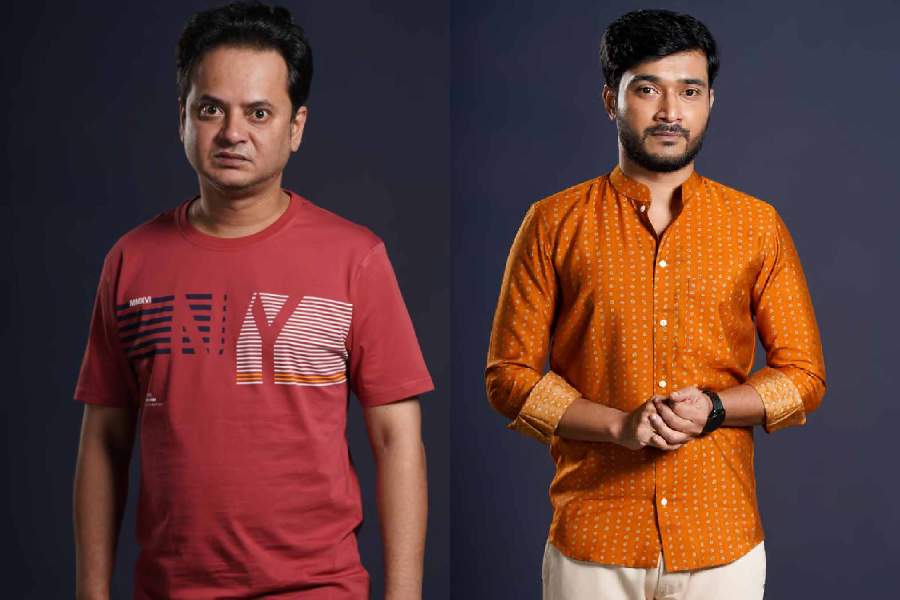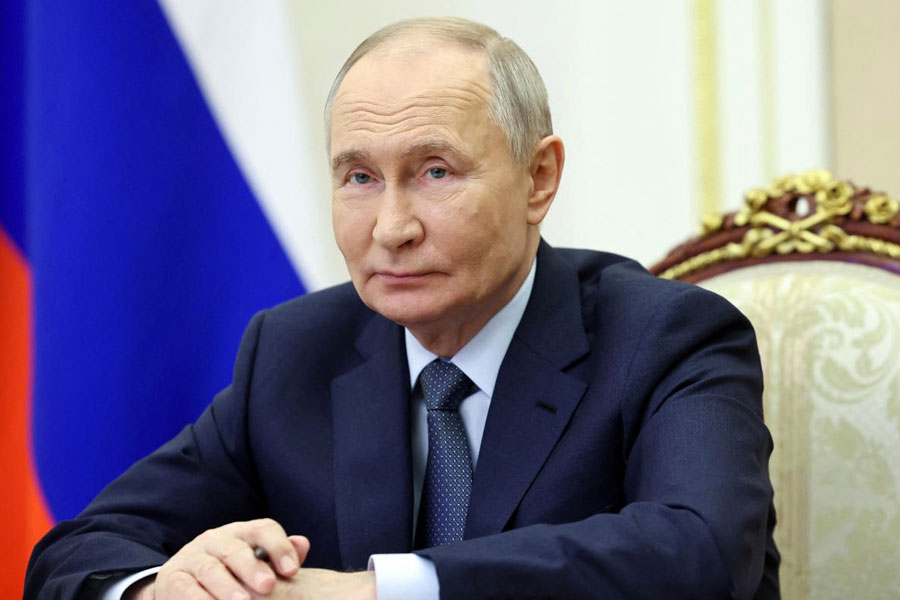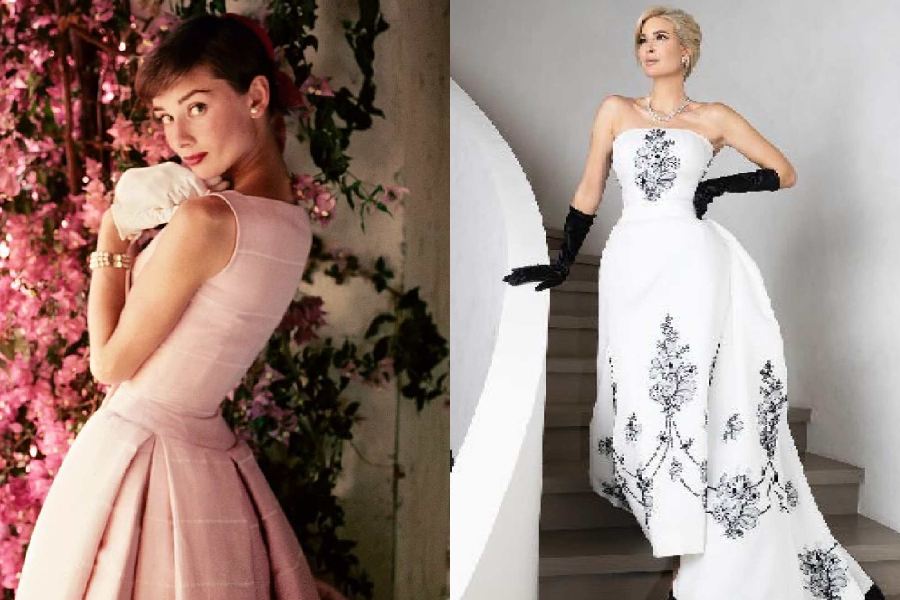The Telegraph Online caught up with actors Rahul Banerjee and Suhotra Mukhopadhyay ahead of the release of their film Shotyi Bole Shotyi Kichhu Nei, directed by Srijit Mukherji. From giving a glimpse of their roles to sharing memories from the shoot, here’s what they talked about.
What made you say yes to Shotyi Bole Shotyi Kichhu Nei?
Rahul Banerjee: I had heard the script 12 years ago. I was part of the original cast. Ritu-da (Rituparno Ghosh) was still alive and was supposed to be a part of the film. But for some reasons, the project was delayed.
This text is a classic and has been adapted all over the world several times. Every actor has a weak spot for classics. A slew of actors around the globe have contributed to various adaptations of this text. I wanted to see how I fared in comparison to them. I was even more excited to be a part of this film when I heard who my co-actors were going to be. I do think a good co-actor elevates your performance.
Suhotra Mukhopadhyay: I had no reason to refuse this film. This is my first film under Srijit-da’s direction. That was the biggest reason to be associated with this film. And as Rahul-da mentioned, the chance to share the screen with this ensemble cast was another driving force. I have grown up watching some of their performances.
When you heard that Srijit Mukherji was adapting Ek Ruka Hua Faisla, did you have any character from the original film in mind that you wished to play?
Rahul Banerjee: A lot of time has passed since the release of Basu Chatterjee’s Ek Ruka Hua Faisla (1986). The characters in Shotyi Bole Shotyi Kichhu Nei are different. As an actor, I have a weakness for the character played by Pankaj Kapur in Basu Chatterjee’s film. Even Annu Kapoor’s performance in Ek Ruka Hua Faisla was great. But I am a huge fan of Pankaj Kapur. Had he played some other role in Ek Ruka Hua Faisla, I would’ve been a fan of that character as well (laughs).
Suhotra Mukhopadhyay: I watched Ek Ruka Hua Faisla when I was very young and have faint memories of the film. I didn’t want to revisit the film before shooting for Shotyi Bole Shotyi Kichhu Nei. I have watched 12 Angry Men, though. I do have personal favourites from the film but they are for very personal reasons.
How was the experience of working with this ensemble cast of veteran actors?
Rahul Banerjee: It was a fabulous experience. I am not saying this because I am promoting the film. Every actor was so secure in their respective roles. No one ever complained about getting less dialogues or screen time. I have worked with big ensemble casts in the past and have seen ego clashes from close quarters. On this set, everyone was relaxed. Nobody was here to show off their stardom.
It was also a learning experience, not only from the senior actors but also from my juniors. How Suhotra approached his role, for example. Or how Arjun (Chakrabarty) added meat to his character.
Suhotra Mukhopadhyay: The shoot was a masterclass in acting for me. I was the junior-most actor in the cast. I can list out how each of my 11 co-stars influenced me (smiles).
Can you take us through your characters in Shotyi Bole Shotyi Kichhu Nei?
Rahul Banerjee: My character is called Sadiq. As the name suggests, he belongs to a religious minority. On the other end of the spectrum is Ritwick’s (Chakraborty) character who wears a tilak on his forehead. All the characters have gathered after a specific incident and we share our views about it. Sometimes we agree and oftentimes we don’t.
Suhotra Mukhopadhyay: My character is called Abir. Kaushik Ganguly plays Abir’s father. Abir is an under-confident man who often buckles under pressure. He also struggles to express his opinion with conviction.
Any memories from the shooting, especially the scene in the sea?
Rahul Banerjee: Unlike an indoor set, the sea is impossible to control. After filming a scene, we often found that the tide had receded, forcing us to move all our equipment and reset everything. At one point, we realised we had drifted far into the sea. Kanchan-da and I, caught off guard with our backs to the water, were suddenly swept away by the waves.
Suhotra Mukhopadhyay: It was a challenging shoot. There were many comedic moments. For instance, Kaushik-da was sitting next to me and we were all sitting at the same level. The waves were crashing against our chairs. I delivered a dialogue and looked at him and found that his chair had sunk, but he kept giving us cues.
Suhotra, we have primarily seen you on OTT. How was your experience of shooting a film?
Suhotra Mukhopadhyay: Indeed, most of my work has been in OTT shows, though I have also been part of a few films. From an acting perspective, the approach wasn’t significantly different. However, the shooting process stood out. The format involved long takes, with the entire cast present in every scene. We would complete each scene in four or five takes. This was a very experimental style of filmmaking and quite unconventional, and almost unheard of, in the Bengali film industry.
Rahul, you have worked with Srijit Mukherji before. How has he evolved as a director?
Rahul Banerjee: He has become more relaxed now. He was very uptight before.
How was the experience of doing workshops before shooting Shotyi Bole Shotyi Kichhu Nei?
Rahul Banerjee: There is a scene where my character gets into a fight with Ritwick’s character. We were able to add more meat to the scene thanks to the rehearsals. The ingredients for the dish were all available, we simply added some spices. And this goes for everyone in the cast.
Suhotra Mukhopadhyay: The fast-paced nature of our work often leaves little time to truly prepare for a role. Acting is, after all, a deeply creative process, yet we rarely get the chance to reflect on or refine our performance after a scene is shot. The rehearsals provided us with that invaluable opportunity. Much like in theatre, they allowed us to connect with our co-actors, break the ice and explore improvisation, which elevated the overall experience.











